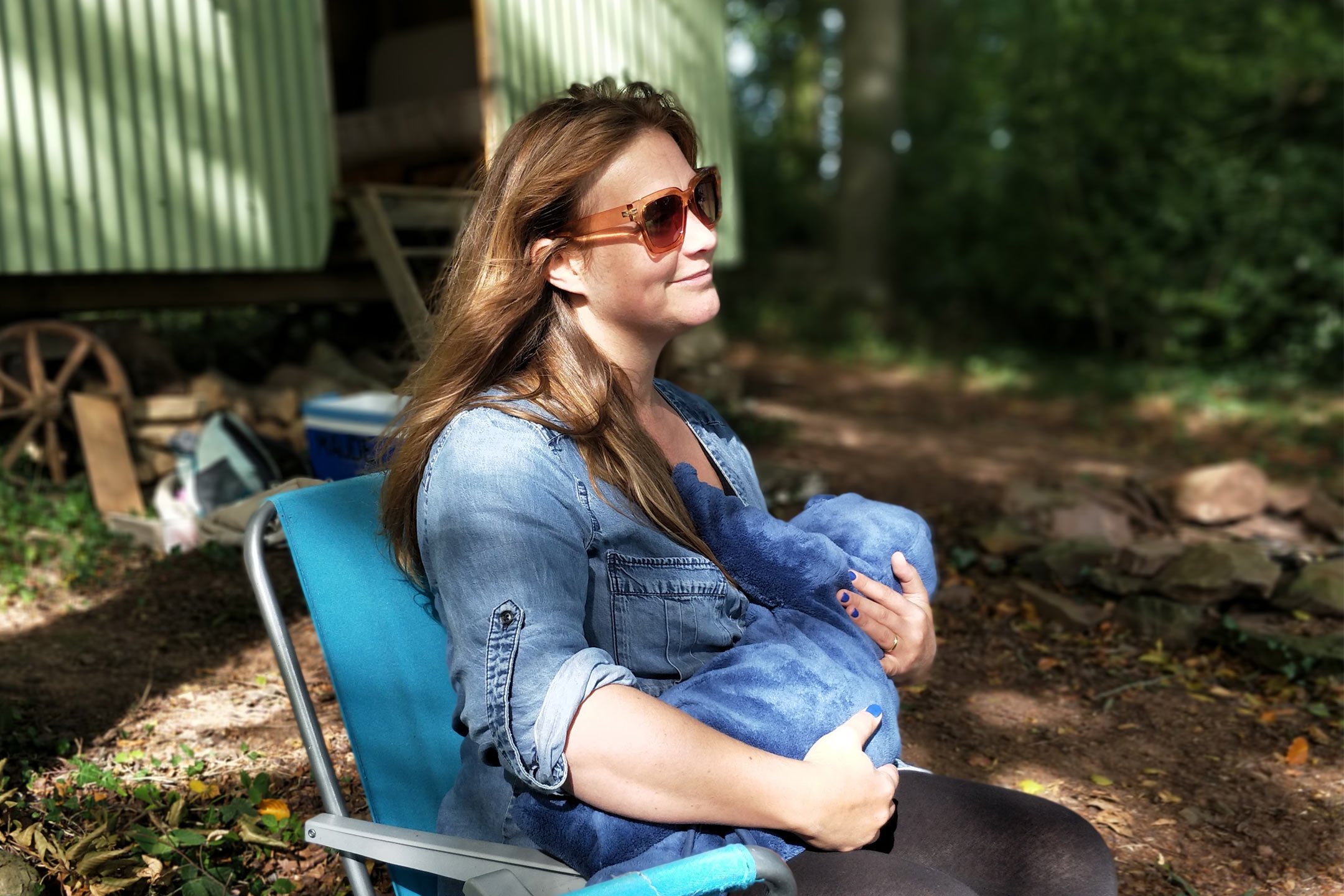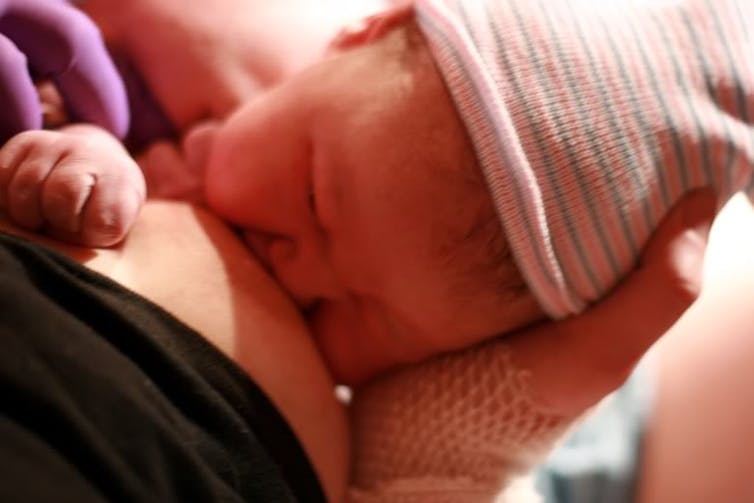
02 May For breastfeeding in public, laws are not enough
It’s rare for a significant period of time to pass before another debate about breastfeeding takes place in the media, writes Alison Bartlett
The latest is about Comedian Arj Barker. Some of the highest authorities have said breastfeeding is okay, even in the Sistine Chapel, as Pope Francis made clear, and at work meetings as UK Chief Medical Officer Sally Davies advocates.
But these calls for babes to arms seem to incite doubts and anxieties about whether it’s okay or not for women to breastfeed within the sight of another person (besides the baby, of course). So, here is what you need to know about the legality of breastfeeding in public.

Hobo Mama/Flickr
Federal and local laws
The law in Australia is quite explicit, making it clear that we are legally vindicated to breastfeed or express milk wherever we are. I say “we” because the law does not discriminate—anybody can do this.
Breastfeeding is sanctioned federally by the Sex Discrimination Act 1984. And, in case it wasn’t perfectly clear, the Sex and Age Discrimination Legislation Amendment Bill 2011 specifically addresses discrimination against the act of breastfeeding, breastfeeding over a period of time, and expressing breast milk as illegal.
While everyone in Australia is covered by this federal legislation, each state also has laws assuring us that babies can be fed wherever they are. Over the last few years, many of these laws have been amended to specifically include breastfeeding and its legal protection in a public place.
New South Wales passed the Anti-Discrimination (Breastfeeding) Bill 2007 and amended its Anti-Discrimination Act 1977.
Western Australia’s amendment 10A of the Equal Opportunity Act 1984 was passed in 2010 to specify breastfeeding or bottle-feeding. And the South Australian Equal Opportunity Act 1984 refers to association with a child, which is seen as broader than just breastfeeding but specifies breastfeeding and bottle-feeding.
The Queensland Anti-Discrimination Act 1991 specifies breastfeeding, as does Tasmania’s Anti-Discrimination Act 1998, Victoria’s Equal Opportunity Act 2010, the Northern Territory’s Anti-Discrimination Act 1992, and the ACT’s Discrimination Act 1991.
But, despite these legislated sanctions, many Australians are ambivalent about breastfeeding in public or about seeing others do so.
Laws versus culture
Here’s just one example off the top of my head. In 2012, Brisbane’s The Sunday Mail reported that one in four people believed breastfeeding in public was unacceptable.
Clearly, laws protecting the right to breastfeed in public are not enough, and what we need is cultural change. In this case, the law is ahead of cultural attitudes and is spearheading shifts in social values, but this doesn’t make it any easier for women to feel okay breastfeeding wherever they need to.
Breastfeeding “scandals” continue to regularly erupt in the press and have been doing so for at least 20 years (that’s when I started noticing them). They never cease to make good copy as women continue to be rudely evicted or politely asked to leave public places or to experience what’s known as “indirect discrimination”, which, by the way, is also illegal.
Indirect discrimination is less confrontational or obvious, but its effect is to change a neutral situation into one that becomes difficult due to breastfeeding. It’s different from being asked to leave somewhere because you’re feeding, but it might be that service is quietly withheld.
At work, it might be that breaks are not allowed, managers are unwilling to negotiate them, or simply an all-day work commitment makes it impossible to find a break for feeding or expressing milk.
While “lactivists” (breastfeeding activists) and digital media have made breastfeeding advocacy more high profile, it’s people who still feel queasy and agitated with even the thought of seeing a child breastfed in public who continue to create a sense of there being something a little bit off about it all.

Alison Bartlett
When the Pope encouraged women to breastfeed in the Sistine Chapel or wherever else they were, I was visiting Italy for the first time. I couldn’t help noticing that almost every church, basilica, museum, and gallery I entered had an image of the Madonna breastfeeding – the Madonna del latte.
I’m not Catholic or otherwise religious, but these images were beautiful (and much more appealing than the violence of crucifixions or torture or battle).
I don’t know what the breastfeeding rates or laws are in Italy, but I wondered what impact so many sacred images of breastfeeding would have on a culture.
Until the population gets used to seeing breastfeeding as commonplace or unremarkable – in the chapel or the café, the office or the parliament – breastfeeding will continue to draw attention for all the wrong reasons.
And that’s reason enough to continue feeding babies whenever and wherever they need to be fed. ![]()
Alison Bartlett, Professor in Gender Studies, The University of Western Australia
This article is republished from The Conversation under a Creative Commons license. Read the original article.




